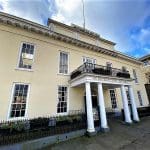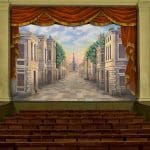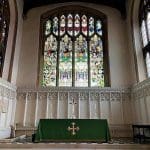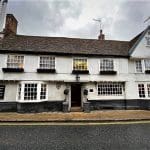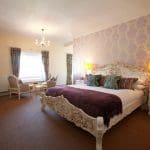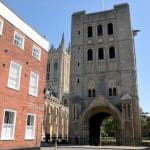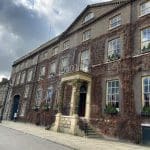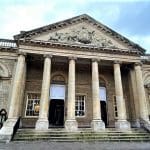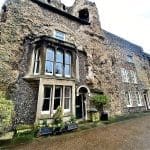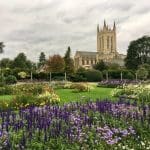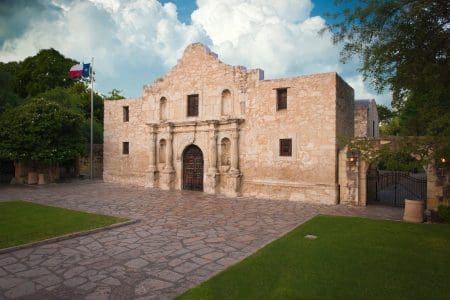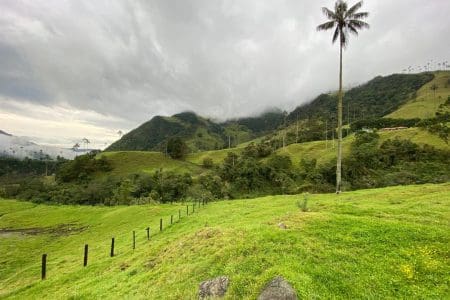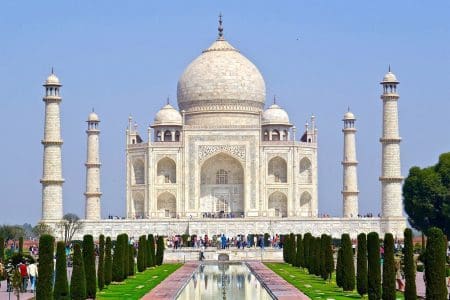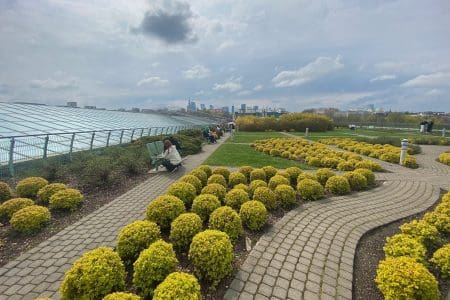Before the Coronavirus pandemic gripped the UK, Mark Bibby Jackson took the short trip to Suffolk to discover a plethora of things to do in Bury St Edmunds, from drinking in the smallest pub in the UK to strolling around the ruins of what was in its prime one of the largest abbeys in Europe. Now that travel across England is now permitted once more, Bury St Edmunds is a place you really should visit.
Standing on Angel Hill, it’s hard to imagine that in the Middle Ages Bury St Edmunds was one of the most important towns in England. Like with many a square in the UK it has now been converted into an open air car park, but one, it has to be said, with a remarkable setting.
On one side of the square lies the Grade II listed Angel Hotel, built in 1452 but with a Georgian façade, where Dickens once resided, and where I will spend the night. To its right is the Grade I listed 18th century Athenaeum, Bury St Edmunds, which in its prime hosted many a grand ball in its Assembly Rooms. And opposite are the ruins of what in its prime was one of the major religious sites in Europe – the Abbey of Bury St Edmunds.
St Edmund – first Patron Saint of England
In medieval times people used to flock from all over Europe to pay pilgrimage to the Benedictine abbey which is where the body of St Edmund was buried.
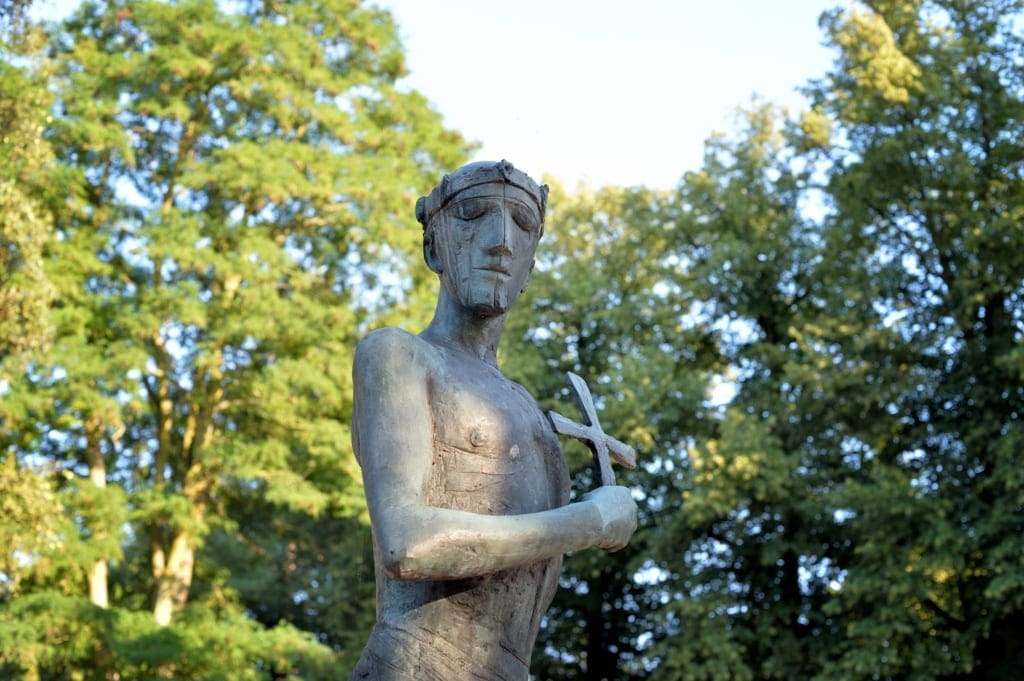
The first Patron Saint of England, Edmund became King of East Anglia at the tender age of 14, until he came to a sticky end at the hands of the marauding Vikings at the battle of Thetford in 869. Edmund fled but was captured and offered the choice of repenting his religion or death. He chose the latter, and suffered a pretty horrendous death which concluded with his decapitation.
Early in the 10th century Edmund was declared a martyr, and his body brought to the Saxon town of Bedric’s Worth, now Bury St Edmunds. In 1020, King Canute founded the Abbey of St Edmunds, which means that 2020 is its 1,000th anniversary. A series of events including a procession of Benedictine monks on 23 and 24 May have been arranged to commemorate the occasion.
Bury St Edmunds Abbey : A Place of Pilgrimage
In medieval times the abbey was one of the richest and most powerful in England with 80 Benedictine monks practising there.
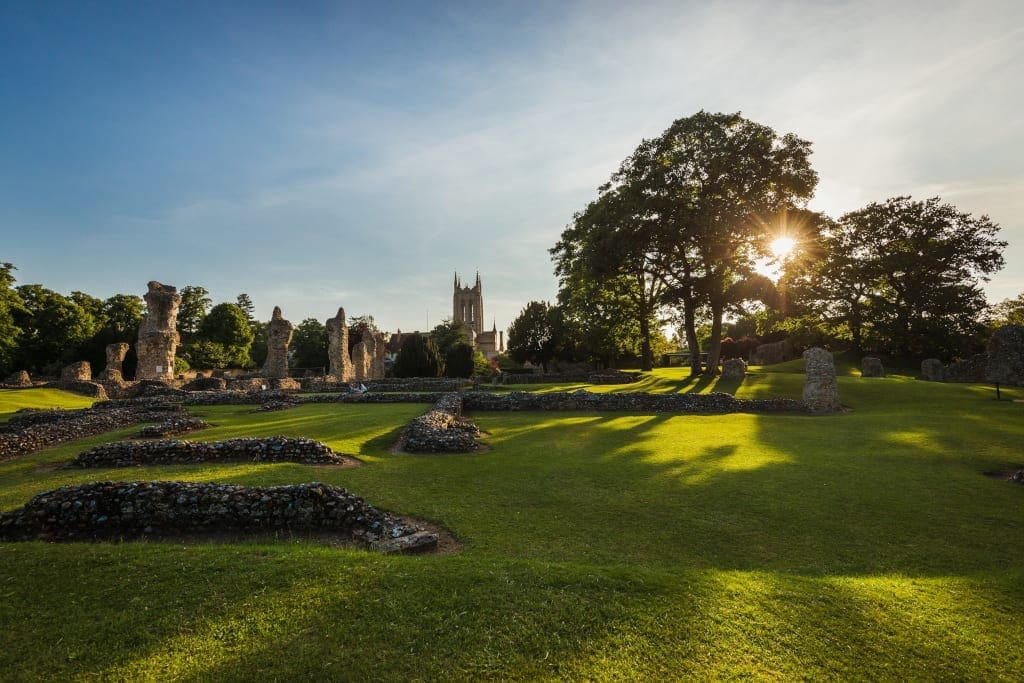
Throughout the middle ages pilgrims, rich and poor, including kings and queens, processed here from around Europe. Apparently the abbey was the second largest religious building in Europe after Cologne (before St Peter’s was built), and the town’s size and wealth increased as the market became an important stop on the medieval trading route. By the 12th century Bury St Edmunds had a population of some 4,000, which was considerable at the time.
The wealth of the abbey was a cause of much tension with the town. This boiled over in revolt in 1327 with the King having to intervene.
It was also at the Abbey of Bury St Edmunds that nobles opposing King John met in 1214 to sign an oath of allegiance to force the English king to sign what was to be known as the Magna Carta. A plaque on the ruins marks the spot.
Following the dissolution of the monasteries in 1539, St Edmunds Abbey fell into ruin. Its riches were plundered and the body of St Edmund disappeared.
However, remnants of the abbey remain including the 14th century Great Gate and Norman Tower. Also, a stroll around the Abbey gardens in Bury St Edmunds is well recommended.
St Edmundsbury Cathedral and St Mary’s Church
The Abbey of St Edmunds is not the only religious place with a historic connection. The original St Mary’s Church was built in the 12th century, but nothing remains of this. The current church dates back to the latter end of the 13th century with the original chancel remaining, although much of the existing church reflects major renovations during the 14th to 16th centuries. Allegedly it has the second longest aisle, as well as the largest west window, in the UK, as well as a magnificent hammer-beam Angel roof. The comparatively recent 1854 stained glass window is equally impressive.

St Mary’s is probably best known for being the only burial site of a French queen in England. Mary Tudor, sister to Henry VIII married Louis XII of France in a typical dynastic marriage of convenience, despite being 34 years his junior, in 1514. Louis died three months later. This was a blessing to the 18-year-old Mary, who was already in love with Charles Brandon, Duke of Suffolk, and a close friend of Henry.
The English king sent Brandon to retrieve his widowed sister. But the doting couple eloped, marrying in secret in March 1515. Although this was an act of treason, Henry pardoned both friend and sister, upon payment of a fine of £24,000 – the equivalent of more than £7 million today, although the sum was later reduced – and the couple were married later that year at Greenwich Palace.
Upon her death Mary was buried at the Abbey of St Edmunds, but her body was moved after the dissolution of the monasteries to St Mary’s Church. The grave was a simple affair, but in 1784 it was disinterred and a marble encasement placed around it. In the process locks of Mary Tudor’s hair were removed, one of which ended up at Moyse’s Museum in town.

Bury St Edmunds’ cathedral is a much more modern affair. St Edmundsbury Cathedral is built on what used to be St James Church. It became a cathedral in 1914. But it was not until the 1960s that it really took off with a redesigned and extended nave by Stephen Dykes Bower. Airy and light, the choristers are well worth a visit.
Theatre Royal and Smallest Pub
The historic things to do in Bury St Edmunds are not limited to the religious. Built in 1819 the Theatre Royal Bury St Edmunds is the last surviving working Regency playhouse in the country.
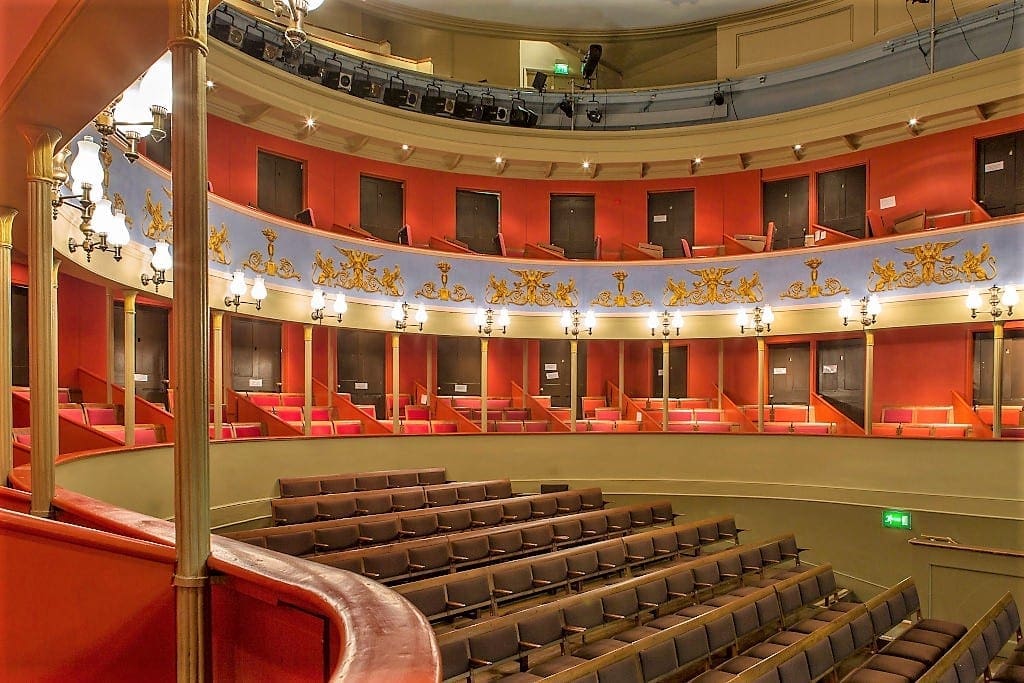
Now owned by the National Trust, it was designed by architect William Wilkins and taken over by Greene King brewery. Closed in the 192os due to the popularity of the cinema, the theatre was used as a barrel store by the brewery before being reopened in 1964. A subsequent refurbishment a dozen years ago returned the theatre to its original layout with a pit in the auditorium and individual boxes in the circle.
In regency times performances would have carried on for several hours, with various acts on the bill, as a trip to the playhouse was seen very much as a social occasion.
After so much walking, we had built up a thirst, and although the Theatre Royal is just across the road from the Greene King brewery, we opted to head back into town to frequent the smallest pub in the UK.
Opposite the glorious 1862 The Corn Exchange, The Nutshell Bury St Edmunds measures 15 foot by 7 foot, so social distancing might be a bit tricky. It has been an ale house since the 1800s when the owners of the adjoining pawnbrokers realised there might be good trade in setting up a drinking establishment next door.

Above the bar hangs a mummified cat, possibly to ward away evil spirits, though the only spirits you are likely to find here come in a glass.
The Nutshell is a throwback to a time when a local was a local – we were accepted into the local banter without reservation. And considering the brewery was less than a mile away it came as no surprise that both IPA and Abbott were excellent; I had to try both you understand for thorough research.
An Angel’s Delight
After this we returned to the Angel Hotel where we were booked in for dinner at its Eaterie restaurant.
The Angel has big refurbishment last year so it has a relaxing modern interior juxtaposed to the classic facade. It is benefitting from a surge of interest caused by corporate clients Greene King and British Sugar – the two big industries in town – which meant that even on a Monday night in January the restaurant was quite full.
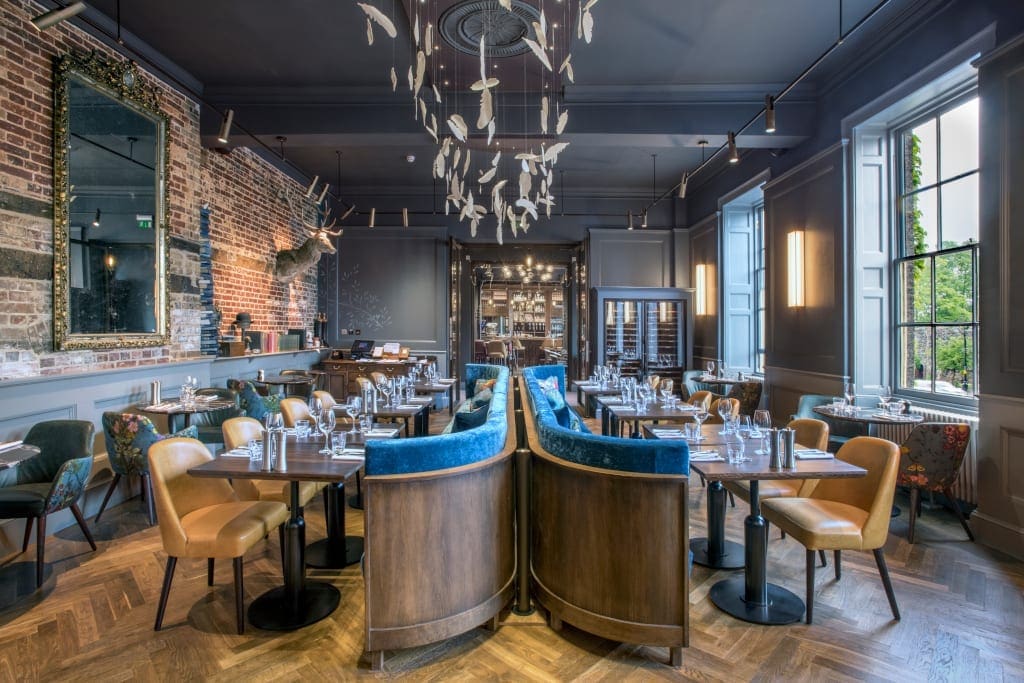
The starters a cheese soufflé and scallops were excellent as were the pork rump and stone bass, the latter was extremely succulent although I personally thought the mussels risotto was a tad heavy for the lightness of the fish. The highlight though was the selection of cheeses – all from the UK – that suggest the country’s fromage lovers should brook no fear in a post-Brexit world. The modern decor blended well, suggesting that blue is the new grey.
My contemporary room was luxurious – I had one of the rooms at the front of the building although sadly not the room where Dickens, Oscar Wilde or Angelina Jolie stayed. A silver bathtub was la piece de la resistance. However quite why my vast bed had three sets of double pillows I do know not – perhaps Bury is a more swinging town than at first sight appears.
Horrible Histories – Moyse’s Hall Museum
The weather in Bury St Edmunds on our trip was mixed. On the first day it rained, but on the second when we visited St Mary’s Church, the sun was out and the Angel Hill in particular looked at its best. If it happens to rain on your trip as well, which might happen, it’s the UK after all, we suggest you try some online activities: shop, play games, even research some sports betting online.
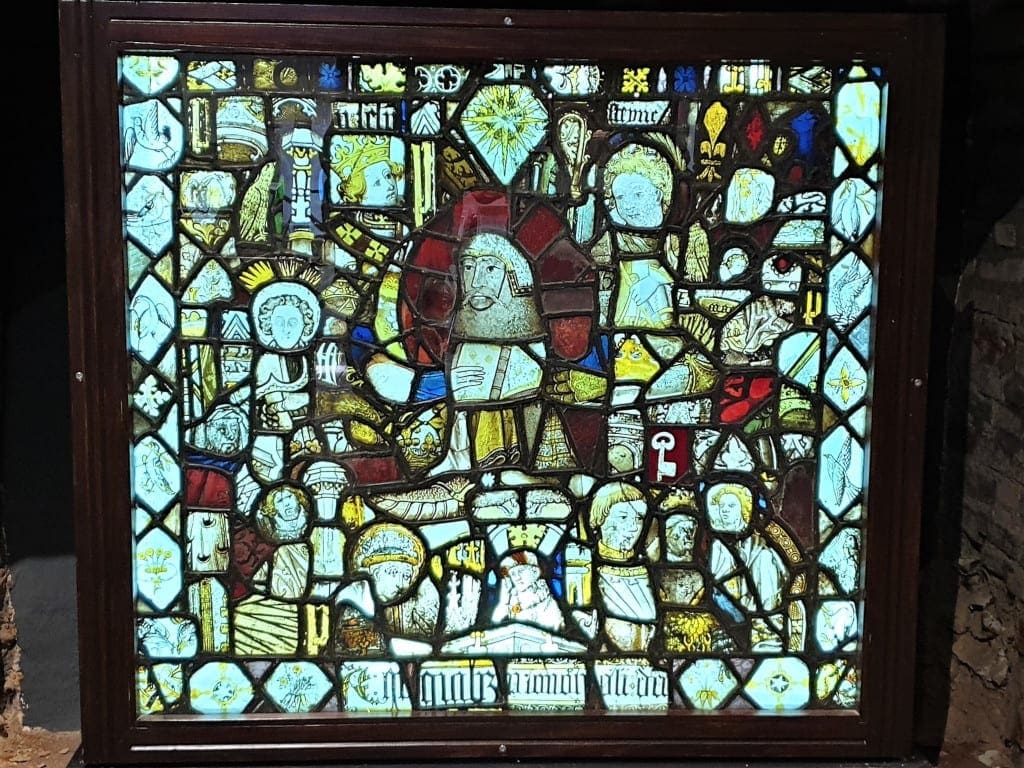
Our last call on our whistle stop tour of what to do in Bury St Edmunds was to a museum that is developing quite a repute for its horrible history.
Housed in one of the last surviving Norman houses in the UK Moyse’s Hall Museum is an eclectic place with seven quite distinct display rooms. The ground floor dates back to the 12th century, so perhaps it is appropriate that here is kept some stained-glass from the Abbey of St Edmunds, including a wonderful piece of either the saint himself, or perhaps Edward the Confessor – apparently the jury is out on that one.
In the adjoining room is the lock of hair from Mary Tudor that was seized from her grave in the 18th century. But it is behind this in the museum’s back room which dates back to Tudor times that the truly gruesome treats await.
One cabinet is devoted to witches, with a mummified cat – clearly a thing in these parts – and a wizard’s stick that would please Harry Potter. Next to it is a display on William Corder, dubbed the Red Barn Murderer of Polstead for killing his lover Maria Marten in 1827. He was hanged for the deed after posting an advertisement for a wife, successfully, and then being caught, still in possession of the pistols that had killed Mary.
In the same display case there is a scalping from Corder’s head where his ear is still visible, and a book that was apparently bound with his skin. Next to it is a gibbet cage from 1794.
Such tales are going down a treat with the strong-stomached schoolkids in the area. Footfall through the fascinating museum is booming partially due to Terry Dearey writing six of his Horrible History stories on the museum’s contents.
However, for me the real treat in the museum was simply wandering around the wonderful building that was a jail at one stage in its history, and seeing the amazing collection of clocks and watches collected by Frederic Greshom-Parkington and gifted to the town.
My trip of things to do in Bury St Edmunds ended as it started back on Angel Hill marvelling at the wonderful setting, this time with the benefit of sun. On our short trip back home we stopped at the lovely town of Lavenham on the way. Bury St Edmunds is a great place for a short stay or weekend break. I just wonder why I have never visited it before. I will return soon that is for sure, if only to have another pint in the Nutshell.
If you wish to explore the countryside then the open spaces near Bury St Edmunds are well worth discovering, and you can always stay at the beautiful and historic Swan at Lavenham.
Things to do in Bury St Edmunds : the Festivals
One of the great things to do in Bury St Edmunds is to visit one of the town’s many festivals. In May there is the Bury St Edmunds Festival, which features concerts and talks, Our Bury St Edmunds food and drink festival is held over the August Bank Holiday weekend, and the Bury St Edmunds Christmas Fayre occurs in late November. Sadly as with all events in 2020, the first two festivals were cancelled, but should return in 2021.
Hotels in Bury St Edmunds
The excellent, historic Angel Hotel is most definitely recommended, not least for its wonderful service. Alternatively, fill in the form below for a range of hotels in town. Or check out what rooms there are in town here.
Click to search for hotels with AgodaThings to Do in Bury St Edmunds and Beyond
For other things to do in Bury St Edmunds and beyond, click here www.burystedmundsandbeyond.co.uk.
